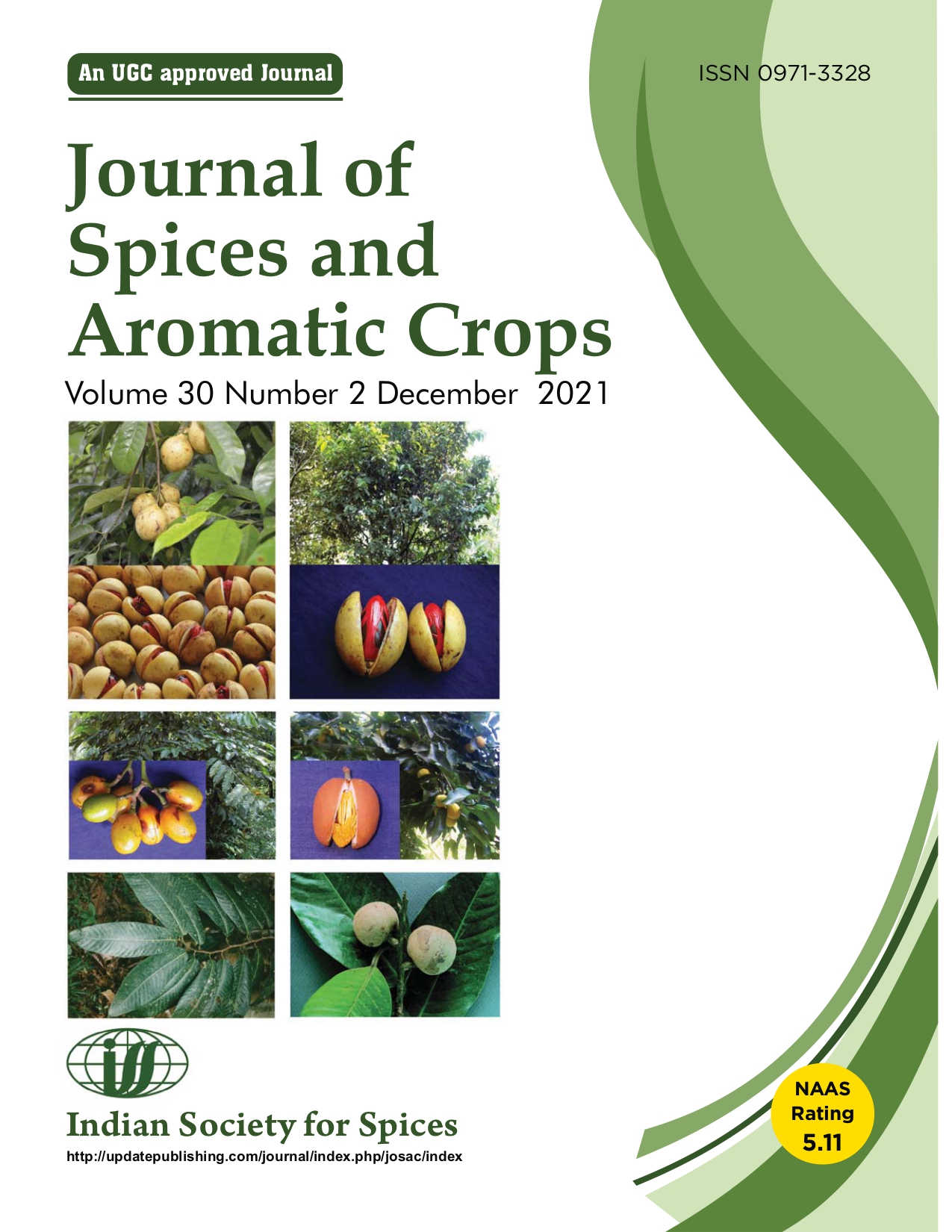Response of black pepper varieties for propagation by serpentine layering
Response of black pepper varieties for propagation
DOI:
https://doi.org/10.25081/josac.2021.v30.i2.7227Keywords:
planting material, serpentine layering, varieties, survivabilityAbstract
In the present study response of light black pepper verities for propagation through serpentine layering was studied. Verities showed significant variations with respect to growth attributing parameters, survivability and numbers of layers per year. Maximum survivability (93.00 % and 88.33 %) at 30 and 90 days after cutting was found in Panniyur-1. Maximum planting material production per year was achieved in Panniyur-1 (51.17) which was higher than the rest of the varieties but was statistically at par with Panniyur-2 (50.50) and Pournami (50.17). These three varieties may be considered for higher production of planting materials through serpentine layering method.
Downloads
References
Akshay K R, Narayana S M, Raviraj S, Ganapathi M & Thippeshappa G N (2018) Efficacy of media and growth regulator on rooting of black pepper (Piper nigrum) cuttings. J. pharmacogn. phytochem. 3: 413– 417.
Gomez K A & Gomez A A (1984) Statistical Procedure for Agricultural Research. pp. 1-340. Second Edn. International Rice Research Institute John Wiley and Sons. New York.
Khandekar R G, Haldankar P M, Pande V S, Joshi G D, Bagade D S, Malve D B, Bhagwat N R, Rangwala A D, Jambhale N D & Ramana K V (2004) Studies on rapid multliplication of black pepper (Piper nigrum L.) on soil mound. J. Spices Arom. Crops 13 (1): 34–36.
Mani A & Kabiraj A (2019) Export potential of spices and its value-added products. Agriculture and Food: E-Newsletter 1 (8): 338–347.
Nybe E V, Raj M N & Kandiannan K (2016) Planting material production technology in vegetatively propagated perennial spice crops - black pepper, nutmeg, cinnamon, cambodge and tamarind. Advances in planting material production technology in spices. Proceedings of National Seminar on Planting Material Production in Spices pp 2–18. Directorate of Arecanut and Spices Development, Kozhikode, Kerala.
Prajapati N H (2015) Effect of plant growth regulators on rooting of cutting in black pepper (Piper nigrum L.) cv. Panniyur-1 under protected cultivation. M.Sc. Thesis, Navsari Agriculture University Gujarat.
Thankamani C K, Srinivasan V, Hamza S, Kandiannan K & Mathew P A (2007) Evaluation of nursery mixture for planting material production in black pepper (Piper nigrum L.). J. Spices Arom. Crops 16 (2): 111-114.
Published
How to Cite
Issue
Section
Copyright (c) 2022 Adarsh Thapa, S. Datta, U. Rai

This work is licensed under a Creative Commons Attribution-NonCommercial-NoDerivatives 4.0 International License.






 .
.